For DAOs, with Love
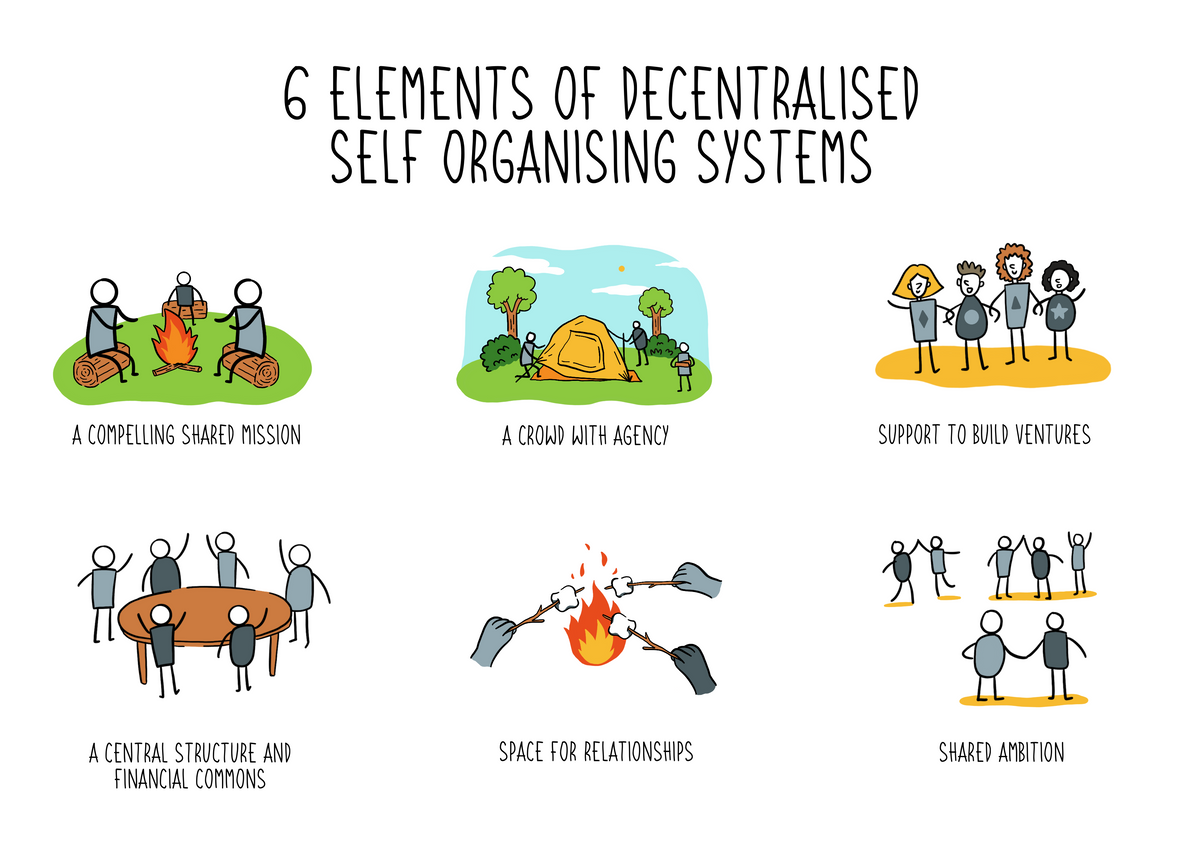
Reflections from a decade of building decentralised organisations.
This is a 3 part article for people building DAOs trying to solve meaningful problems.
It has been written to share learnings and reflections from a decade of building Enspiral, a decentralised, autonomous organisation in the pre Web3 era.
- Part one offers a frame for ‘the big idea’.
What’s the potential of decentralised organising and why is it worth exploring this way of doing things? - Part two shares working blueprints.
A theory and model iterated from lived experience building Enspiral. It is intended to provoke thinking and share working structures and processes ready to be adapted. - Part three points to more stories, resources and thinkers.
Nothing focused on solving hard problems is ever simple or linear. Multiple perspectives are always valuable. Find a list of curated links and resources to wide landscape of experiments worth looking at.
Part one: Big ideas worth chasing.

In 2010 I stumbled across a ‘big idea’.
In the decade since, building out this idea has changed how I earn a livelihood, build a career, engage in activism, community and orientate around purpose. It changed my life.
The idea?
A group of people exploring new and different ways of building a company focused around a social mission.
The mission was “More people working on stuff that matters.”
If we keep trying to solve the urgent, important problems we have with the resources we currently have to solve them, we simply won’t get there. We need to radically increase the amount of people working on solving the greatest challenges of our time.
We need more resources. We need more capacity. We need new and different solutions. We need to work faster. We need to change things at a systems level.
We need more people working on the stuff that really matters.
This was the call to arms that attracted people to start building Enspiral in 2010. I think it is just as relevant today.
What was most interesting about it?
Enspiral was more than a compelling mission statement.
At the time Enspiral was a group of people building startups to solve real world challenges. Teams formed to work on problems like the food system, community education, decision-making, professional services to support entrepreneurs and local innovation support programmes. What made it different and compelling was the collective methods and systems thinking applied to how we organised together. Enspiral wasn’t building one company to create one solution to a specific problem led by a few specific people. It was a set of methods and ideas to help entrepreneurs to build businesses in a different way.
By experimenting with governance, ownership and control could we contribute toward improving the systemic issues, failures and inequities in our normal way of structuring, funding, owning and building companies?
In order to build solutions that change the system we had to address how we organise and distribute value. To do that we had to run experiments to get started.
Some of these ‘we organise differently’ ideas and values at Enspiral were captured in axioms like:
- Distributing money, information and control.
Rather than let a few people in leadership control things, let’s work to maximize the autonomy of everyone involved. Let’s build systems and processes to distribute decision making and governance. Let’s figure out how to make everything (especially money and decision making) transparent and inclusive to everyone. - No one leads all of the time, everyone leads some of the time.
Let’s explicitly have no formal top down command and control structure and instead work to recognise the leadership potential in everyone. There is no CEO. There is no leadership team. Let’s ensure strategy and direction is set collectively. Let’s work with flexible processes to serve emergent needs, rather than bureaucratic processes and top down control. - Create opportunities not jobs, and let the right people hire themselves.
To encourage a culture of entrepreneurship let’s give everyone the opportunity to be an owner and navigate their own path to find success. Enspiral won’t give you a job, it’s a space for you to find your purpose, meet your tribe and create your own dream job. Let’s make it compelling to join but harder to stay and let people figure out for themselves what is going to work. - The company of the future will look and feel more like a community.
Let’s work hard to make the explicit social mission and values the cultural attractor and filter. If we model radical generosity, maybe it will catch on. If we prioritize long term relationship building over short term deals we’ll all be better off in the end. Encourage, celebrate and value the work to build trust, deepen relationships and care.
Today, if you’re building a DAO these ideas might sound very familiar.
Back an internet lifetime ago in 2010 there was no real concept of crypto tokens. ‘Decentralised organising’ was a very fringe concept in management theory and labels like ‘social enterprise’ ‘holocracy’ and ‘teal’ weren’t widespread enough to be useful. This made Enspiral confusing. The best description was probably something along the lines of “startup incubator meets Occupy Wall Street meets facilitation geeks meets freelancer cooperative meets community of friends that can throw great parties.”
None of these things are particularly new or groundbreaking on their own. Enspiral just mixed them together into homemade organisational rocket fuel and lit it on fire.
This is similar energy to what I see in Web3 and why I’m excited about it.
DAOs as a laboratory for improving democracy and capitalism.
We have a lot of systems level work to do on spaceship Earth. Capitalism (urgently) needs to evolve to have less destructive externalities and better, fairer distributions of value. We need to remove structural, systemic barriers to make the starting line and opportunity horizon more equitable. Methods of civic democratic governance (desperately) need to evolve out of the 18th century and catch up to the present.
Enter Web3?
Every week new DAOs spin up experimenting with internal token economies and programmable governance structures. Web3 today is a landscape of hundreds of real time experiments innovating on organisational structure, governance and democratic capital allocation. There is a decent chance some of these experiments point the way to solutions that make significant positive impact.
I think new tools, currencies and legal frameworks that enable new organisational experiments have great potential. The rush of energy, resources and talented people moving in on this is exciting.
I’m also wary of the hype.
Building effective decentralised organisations is hard. It requires a committed group of people strapping in and holding on for a ride that covers a lot of weird, often invisible, terrain:
- Understanding how power, leadership and management manifests in an organisation without bosses or positional hierarchy.
- Facilitating large collective discussions to form clear agreements, decisions and outcomes with people spreading every timezone with different levels of capability and context.
- Building strong relationships and the awareness, alignment and care to stay together, learning and iterating through inevitable failures and conflicts.
- Recognising and understanding group dynamics to continually, proactively distribute power and resources to enable everyone to maximise their potential.
These are just a few of the deep human group coordination challenges. Add to that the complexity of tokenomics, crypto protocols, on chain tooling and legal ambiguity that comes with building in a Web3 context…
Combining all these challenges to build competitive decentralized organizations that seek to establish new business models and disrupt existing markets, using unproven technology and navigating compliance headaches… perhaps that goes beyond hard. Perhaps that is closer to crazy.
However, given the level of change we need to improve our society, ‘crazy’ is good. Crazy is needed.
We need to support the people willing to try.
It’s with that spirit that I hope this is a useful contribution to folks out there building and experimenting.
For DAOs trying to disrupt incumbents and do something different, meaningful and systemic, I think the big idea worth chasing is the same one that helped fuel Enspiral. It is led by just one question:
What will we learn when we try?
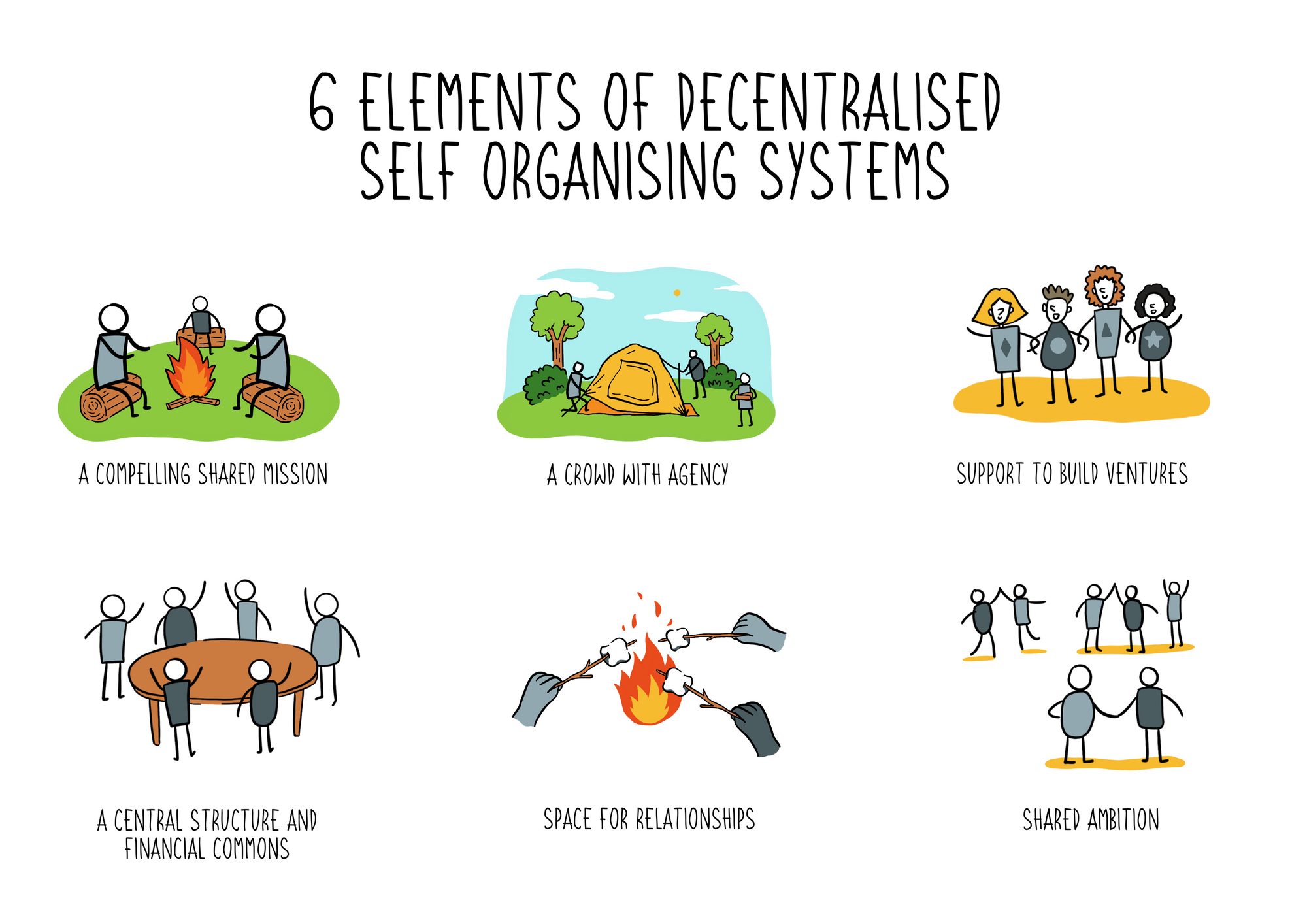
Part two: Working blueprints: 6 elements of a decentralised system.
Like any organic system, Enspiral evolved and changed constantly. There was no working structure out of the box. What served in the beginning didn’t serve through growth stages and is different from what exists today.
If you’re building a DAO or web3 ecosystem, hopefully some of the things we learned will help you avoid some pain or failure and succeed faster. As with any organizational model, the concept is easier than the practice. Nothing is ever as clean or sharp in real life as it is on a page or powerpoint. Not everything will work the way for you in the way it did for Enspiral, but through running experiments value will emerge.
To that end you can consider these blueprints a working theory derived from years of iteration and practice. It is an exaggerated creative model of the possible, drawn from things we tried, things that worked and things that could have worked better.
The 6 basic elements in this model are:

1) A shared mission.
There needs to be a thing in the middle that everyone shows up for.
It doesn’t need to be specific, but it does need to be understood easily. It can be a felt sense or an explicit tangible goal. It doesn’t even need to mean the same thing to everyone involved. It just needs to work.
In Enspiral you could ask 10 different people what the purpose of it was and get 10 different answers. But the underlying intent was probably something along the lines of:
Spend my time working on high leverage problems I care about that make the world a better place. Do it with people I care about, do it in a way that gets me what I need and aligns with my values.

2) Around 200 high agency people.
This collective model is designed around independent, autonomous people galvanized together by a shared sense of purpose and identity. These people are entrepreneurs in charge of their own destiny, with something meaningful to gain together. They are not employees being assembled to execute someone’s vision.
200 is a good number.
It is small enough to create coherence and an interdependent core of strong relationships (ie: a good sized group of people who genuinely care for each other and whose economic and community lives are interdependent).
It is large enough that there are gradients of context, commitment and fuzzy edges. It allows for a healthy flow of new people, ideas and potential with ‘kind of involved’ as well as ‘all in’ participation. It took Enspiral about 5 years to grow to around these numbers, the growth was slow, steady and organic, relationship by relationship.
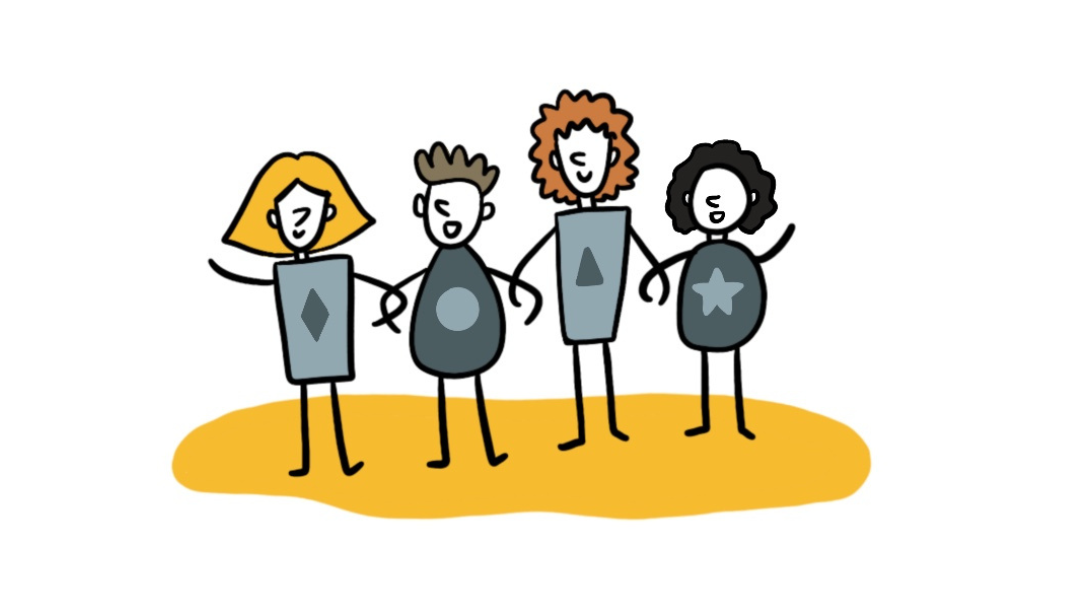
3) Support to build ventures.
When you bring together a group of entrepreneurs, you also bring along their ventures, side projects and unbuilt, brewing ideas. With 200 self-starting people you’ll no doubt end up with various logos, ventures, initiatives, projects, tactics for all sorts of things. Different products and ideas for different markets, but aligned by purpose, values and underlying intent of the founders and builders.
By actively encouraging and supporting ventures to form, the collective of the group to solve problems, grow together and make impact dramatically increases.
This element is an important part of the economic resilience of this collective model. Building ventures and creating interdependent livelihoods and economic potential are what separates a model like this from becoming limited to a community or mutual aid / shared interest group.
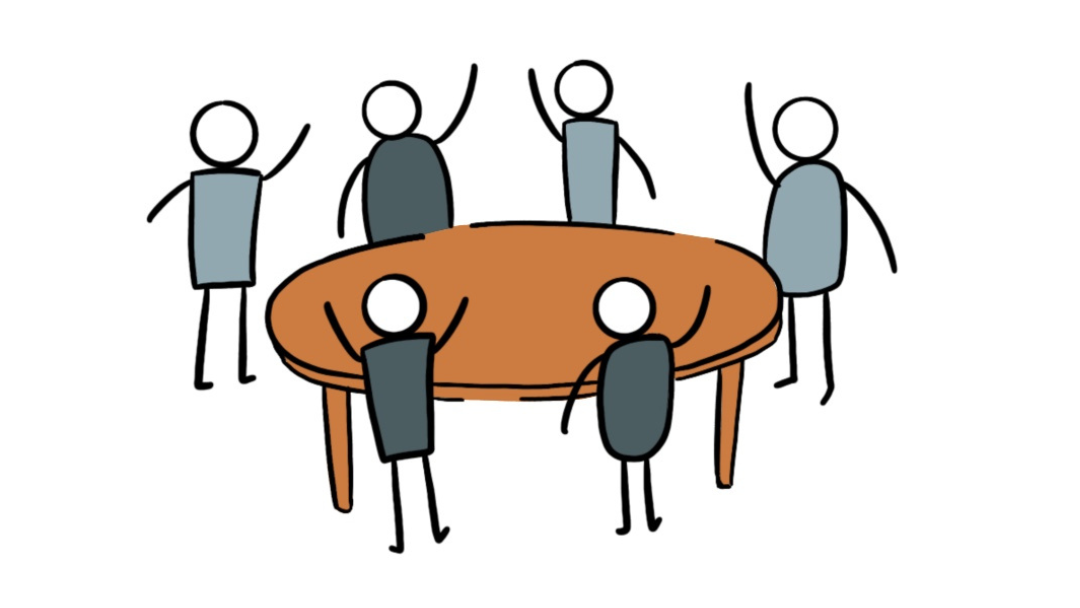
4) A central structural and finance commons.
In the middle of the system is a transparent, well organised entity that manages common assets, brand identity, collects and redistributes common resources and interfaces with the legal world. This legal, structural entity is supported, owned and governed by the community. It is the physical organisational manifestation of the gravity that holds everything together.
There is a critical shared alignment, responsibility and commitment that emerges when a group actually owns, governs and cares for something together. This goes beyond 'a sense of shared ownership', or an 'act like an owner' culture. It means real structural, legal shared ownership.
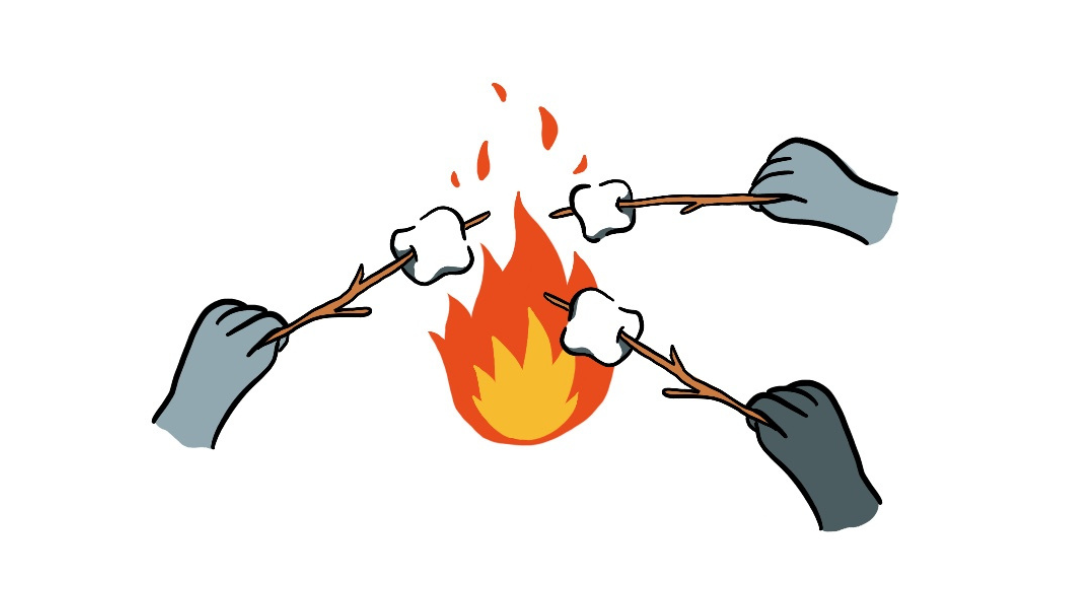
5) Space for relationships and weaving social fabric.
This fabric of community, connection and belonging is hard to measure and often invisible but it is fundamentally critical.
Community isn’t ‘the soft part’ to make people feel good. This is about more than vibes. Trust is a secret weapon. Connection creates safety and fuels ambition. You can go bigger when you know people (really) have your back. Investing in strong relationships that outlive projects and ventures is where the true long term potential of the system is developed. Strong social fabric is also what makes the organisation an awesome place to be, full of love, friendship, self development and great parties!
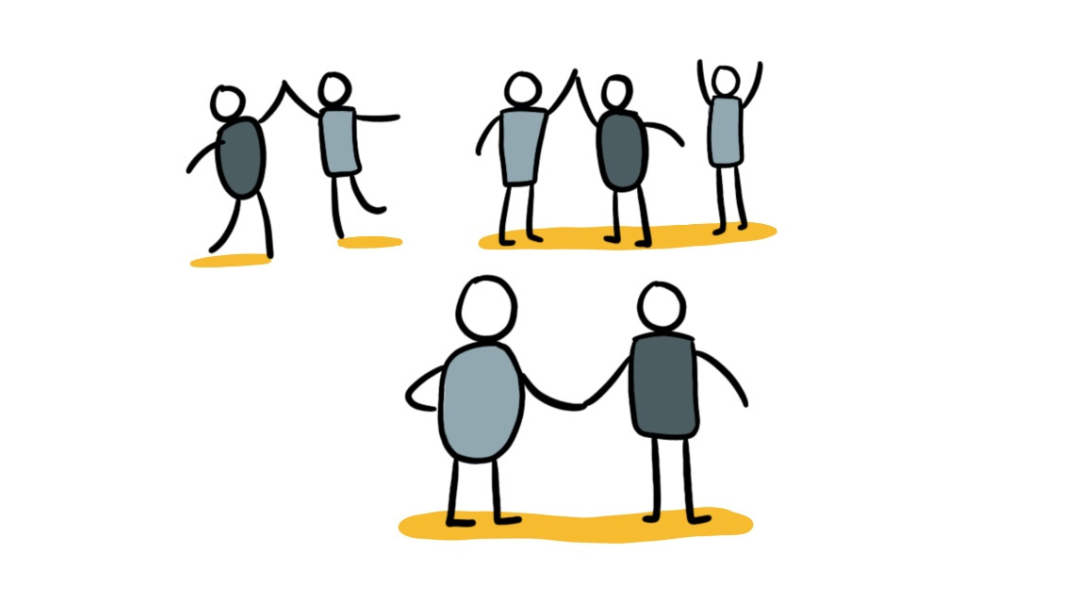
6) Together as a system: A platform for collective ambition.
The sum total of these elements is a collective platform for greater shared ambition. The mission attracts attention and great people. Relationships compound value over time. Sharing common resources catalyse unexpected opportunities and partnerships. Every person and every associated venture can increase their impact by leveraging the collective in some way that best serves their needs.
In short, when it all works together well, it's amazing. As entrepreneurs this is why it’s worth showing up rather than building solo. This is where the ‘return on investment’ lives for ‘making this work for me’ type thinking.
Organising these elements coherently
How do we put these elements together? How do they actually fit together and work as processes?
In order to work as adaptable practical blueprints, let’s break these elements down into layers.
The legal structural layer.
In this case, the system is legally held together by a limited liability company, with a few important tweaks:
- The constitution dictates all surplus finances are distributed back out to the membership to spend on the shared mission.
- Shareholders act as cultural stewards and have no financial upside to be gained.
- The entity in the middle holds the central brand IP and manages financial and legal compliance associated with shared systems and the basic membership model.
- This entity generally doesn’t take holdings of other companies or build up financial resources. It exists to distribute resources and create opportunities, not centralise wealth.
- A special role is created for directors to serve on a ‘Minimal Viable Board’. This is described further in roles below.
The shared financial management layer.
Everyone in the system contributes something to the commons. The goal is to ensure the collective finances are well managed, transparent and there is surplus to be redistributed out to flow through the collective, helping spur new ideas and initiatives. This requires:
- Transparent, simple membership management.
- Clear decision and record keeping on what the core operating costs are.
- Transparent management and reporting of the finances available for use by the community.
- Setting up systems for distributing funds back out into the community (collaborative budgeting and funding processes).
The roles and coordination layer.
“Self organisation” isn’t magic. There are critical pieces of infrastructure required in order to allow a system to enable self organised, autonomous action. Role clarity is one of these pieces.
In this model there are several important roles:
Identity roles
Members & Contributors.
Everyone in the system holds 1 of 2 identities. These roles have no formal hierarchical advantages over each other. Everyone is responsible for their own engagement and has equal opportunity to propose changes, vote, instigate activity etc.
Members hold an extra responsibility to act as cultural stewards with a specific role to invite new contributors, create new members and govern any serious cultural breaches or conflicts.
Aside from the cultural stewardship adopted by members, all functional roles are open to everyone. The overall health of the system is the responsibility of everyone contributing to it.
Functional roles
Catalysts
Funded execution focused roles to help enable working groups, unblock challenges, create connections and opportunities for contributors. The mandate of these roles are defined by the community, supported by a working group and could be described as decentralized executive roles or community builders.
Working Groups
Working groups are small groups of people working together as teams to execute projects. These working groups may have an independent budget assigned by the community or be self financed via voluntary / community contributions. They may ‘pop up’ to execute something specific like running a community event, or serve an ongoing core function like managing a website or running a newsletter.
MVB / ‘Minimal Viable Board’
A special role is created for the legal directors of the limited liability company in the middle of the community. They have an explicit, mandated role to ensure financial compliance and to act as filters, raising any existential risks and pushing all strategic direction setting back out into the community. Operating like a bottom up support backstop, rather than a top down direction setting entity.
Assembly Sprints/Sprinters.
A coordination mechanism where ‘heavy lifting’ for the community is executed in a short burst of time (2-4 weeks). This allows busy people from across the community to be able to ‘tune in’ to effectively do collective work for a set period of time and for catalysts to coordinate these efforts. These sprints become spaces to set collective goals, execute larger pieces of work or build momentum for longer collective processes or projects.
The social layer.
This is where the nature and needs of the people come before anything else. Proven patterns for supporting social cohesion exist. Some successful experiments to consider are:
Stewardship circles.
Every single person supports someone else in a one way relationship. Everyone gives and receives support in the community. It creates a ‘social field’ of indirect reciprocity.
Pods.
Small autonomous groups with set committed rhythms of gathering and relatively high barrier to entry. Pods are formed around specific interests, regions or a common thread of learning and commitment to support. Everyone in the community has the opportunity to start or join a small support pod related to their needs or interests.
Retreats.
Bi-annual, well organised hosted gatherings are the cultural heartbeat of the system. To host 100+ people in coherent, safe, inspiring multi-day gatherings is an art form. By creating the opportunity for people in the collective to step in and do the work, these muscles get built quickly by many people. Organising a retreat is recognised as an act of service that will return to the team who does it in many ways.
The governance layer.
Making decisions together
This capacity of the community to have robust, clear, evolving discussions that are woven together and facilitated towards shared decisions is critical to success. This is an expression of collective intelligence. It is off chain. It does not require tokens to manage. It cannot be installed into a group. It is where collective synthesis happens, It requires trust, empathy, skilful communication and listening. The only real way to develop it is through practice but there are plenty of useful maps out there.
Enspiral was lucky. We had the equivalent of an in-house team building bespoke decision making software to enable structural and cultural innovations in governance and control. Simply put, for our journey with Enspiral would be unimaginable without Loomio being built along the way. We could not have survived without the online facilitation skills and decision-making protocols and processes developed by many people, through practice, around the tool.
Defining governance
The ‘hard governance’ of the system is outlined in relatively simple agreements that describe processes for roles, decision-making, cultural norms. Everything lives in a public handbook. There is nothing particularly groundbreaking about any of the agreements, it is how they hang together to create an enabling environment that is valuable.
The foundational agreement is the decision-making agreement, which acts as meta-governance and outlines how we decide how we decide, and how we change what we have decided.
The economic partnership layer.
This layer creates visible association, collaboration and sponsorship between associated ventures. These relationships of support may be held by community members but are formalized in the system through sponsorships and brand agreements between ventures.
It is through these partnerships that joint ventures, collaborations or new initiatives emerge and are enabled to grow out of the community.
Nice theory - how does it work in practice?
Everything listed comes from real experiments that we ran in some form or another, or are continuing to run at Enspiral. When you put all these structural layers together, they form the blueprints of a potent organizational model that will enable entrepreneurs to thrive interdependently.
However, the model is still just an idea.
Experiments are where the real work is and the real progress is made. If you start to run experiments, don’t expect everything in this model tol be helpful or useful.
Not everything will be needed or useful to your organization. Not everything will be needed to create a functioning system. Not everyone will see value or interact with all layers. Different people may show up for different things. Different communities may leverage these layers differently depending on what the collective strategy is.
The potential lies in adaptation and execution.
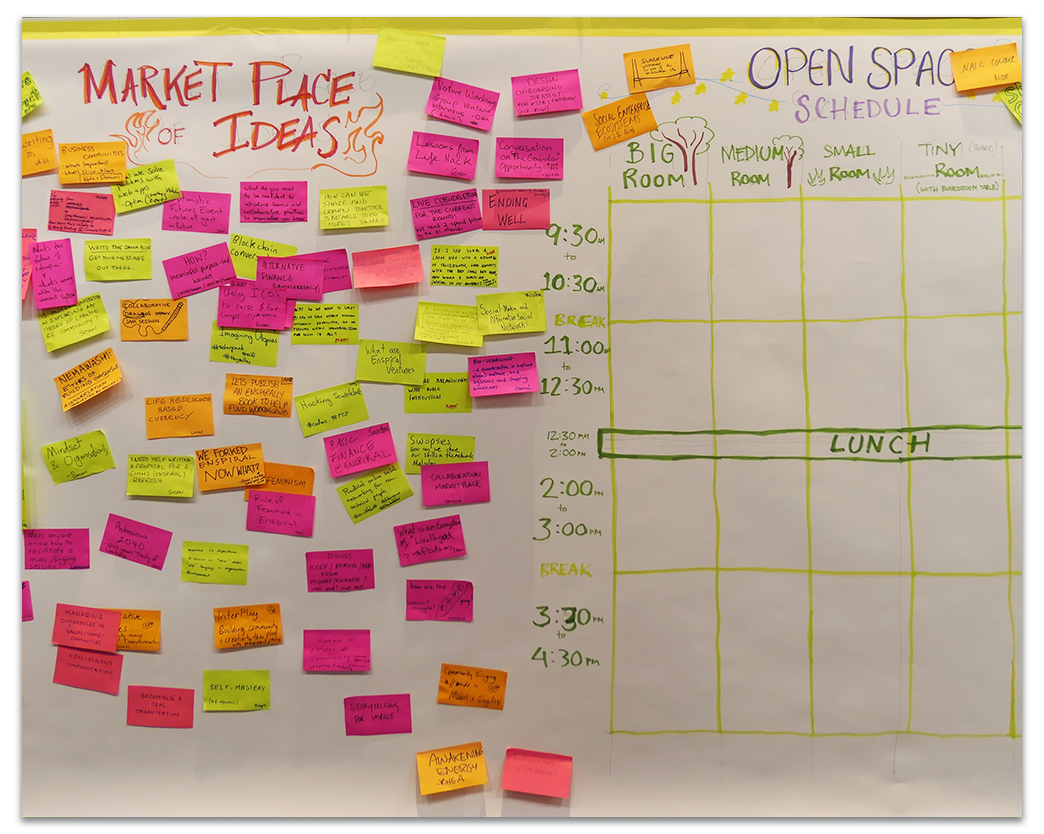
Part three: Tools, methods and stories from the road.
When ideas meet action and get messy, stories help make sense of things. The story of decentralised organisation building feels like it is still very much getting started. As the number of experiments grows, so does the noise. If you’re making sense and building in this space, I think these blogs, conversations and resources will add some colour and shade to the structural outlines above.
Leadership, governance and decision making.
The Enspiral Handbook is the open, public repository of working agreements, guides and processes. It is written primarily as a practical resource for Enspiral contributors to run Enspiral - but can be useful as a resource. The decision making agreement is a particularly useful cornerstone.
Alanna Irving’s Full Circle Leadership was originally shared as a blog post in 2016, and has since expanded with further articles highlighting common patterns and shadows and challenges. The model remains an extremely useful resource for recognising and celebrating different forms of leadership in non-hierarchical organizations. Alanna covers bossless leadership, decision making and working with money in depth on this podcast with Lisa Gill.
This conversation with Richard Bartlett and Enspiral’s original instigator (ex-Founder) Joshua Vial covers some of the common patterns and traps for leaders leading from source vision, to centralisation towards decentralisation.
Relationship and community building
Microsolidarity is a fantastic living, growing, open community resource instigated and developed by long time Enspiral members Richard Bartlett and Natalia Lombardo from The Hum.
Highly recommended for understanding the social physics of belonging and creating coherence in groups at different scales. Richard also shares much of his thinking out loud on twitter and substack.
Borderless, remote organising is exciting, but effective in person gatherings remain crucial for building decentralized organizations tied together by resilient community bonds. This written reflection breaks down much of the hidden complexity into actionable ideas.
This podcast conversation with Richard and Silvia Bastos shares more context of why, and the details of how, retreats became a critical heartbeat for Enspiral.
Self organising action
Looking at how an organization makes decisions is an effective way to gauge how decentralized it is. Enspiral was lucky to grow up alongside the Loomio tool. Loomio is an off-chain, open source software tool designed specifically around collaborative decision making processes. Enspiral continues to use Loomio to make complex governance community agreements and day to day updates and decisions.
Optimi is a no-code/low-code agency that has been a core part of Enspiral’s operational layer. For a zoom in on the nuts and bolts of how decentralised organising systems are built, which tools are used and why, check out some of their writing. Sometimes it’s the unsexy work of wiring up the right tools in the right way that enable a new kind of workflow to emerge. For an example, check out their blueprint of how Enspiral built its self organising, multi-tier membership model.
Kate Beecroft and Lisa Gill dive deeply into where self management and DAOs meet in this podcast episode on Leadermorphosis. They cover many topics including dissensus, healthy tension beyond consensus, patterns for thinking about and understanding how self management principles map to decentralised organising.
Working with money
Over the years many Enspiral teams have experimented with money, running self setting salary processes and collective consulting revenue sharing models.
Cobudget is a tool originally built by Enspiral contributors to help spend common resources in a democratic way. Over years of experimentation in collaborative budgeting and funding, several patterns and methods have evolved in different groups. Here are some examples from Enspiral. Dive further into the details of these processes in the cobudget handbook.
You can also follow the work of Francesca Pick, a co-founder of Greaterthan, longtime member of Enspiral and Ouishare who is actively stewarding the cobudget project. Follow her writing on medium or via Greaterthan.
And finally, yes, here comes the book plug…

We published Better Work Together in 2019 as a co-authored guide and reflection on methods, stories, success and failure from building Enspiral. It brings together multiple perspectives on how Enspiral formed, what was most important, what worked, what didn’t and why it was worth trying. You’ll find it in paperback and e-pub here.
For more resources like this, stay tuned as we continue publishing, sharing stories and resources at blog.betterworktogether.co
Thanks to Jen Tran for illustrations and Melina Chan, Susan Basterfield and Cecile Marion for editing support on this post.
